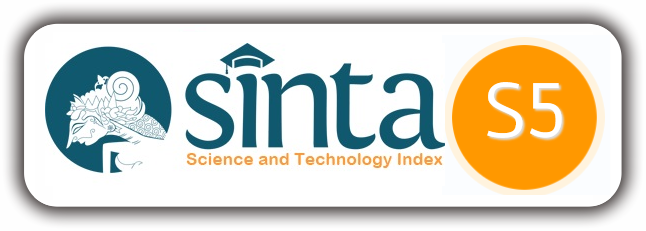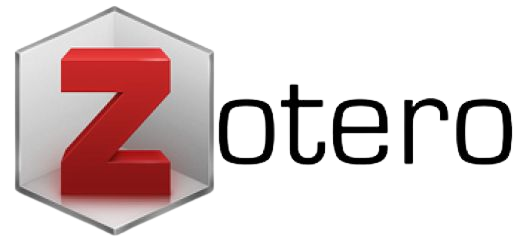APAKAH AUDIT TEKNOLOGI INFORMASI DAPAT MEMUASKAN EKSPEKTASI PENGGUNA INTERNAL? (STUDI PADA UNIVERSITAS TERBUKA (UT) INDONESIA)
Diana Putri(1*), Sumiyana Sumiyana(2)
(1) Universitas Gadjah Mada
(2) Departemen Akuntansi, Fakultas Ekonomika dan Bisnis, Universitas Gadjah Mada, Yogyakarta
(*) Corresponding Author
Abstract
Keywords
Full Text:
PDFReferences
Baker J, Jones Dr, Cao Q &Song J (2011) Conceptualizing the dynamic strategic alignment competency. Journal of the Association for Information Systems, 12(4), pp. 299–322.Banker, H., Pavlou, P.A. and Luftman, J. (2011), CIO reporting structure, strategic positioning, and firm performance, MIS Quarterly, 35(2), pp. 487-504.Booth, M., & Philip, G. (2005). Information systems management: Role of planning, alignment and leadership, pp. 391-404.11C.R. Snyder, Stephen S. Ilardi, etc. (2000). The Role Hope in Cognitive- Behavior Therapy. Cognitive Therapy and Research, 24(6), pp. 747-762.Carnaghan, C. (2004), Discussion of IT assurance competencies, International Journal of Accounting Information Systems, pp. 267-273.Chan, Y. E., Sabherwal, R., & Thatcher, J. B. (2006). Antecedents and outcomes of strategic IS alignment: an empirical investigation. IEEE Transactions on Engineering Management, 53(1), pp. 27-47.Chatterjee, D., Richardson, V. J., & Zmud, R. W. (2001). Examining the Shareholder Wealth Effects of New CIO Position Announcements. MIS Quarterly 25(1), pp. 43-70COSO. (2013). Guidance: COSO. Retrieved April 2, 2017, from COSO web site: www.coso.orgCreswell, J. (2010). Research Design:Pendekatan Kualitatif, Kuantitatif, dan Mixed. Pustaka Pelajar.Creswell, John W. (2014). Research Design Qualitative, Quantitative, and Mixed Methods Approaches. 4th Ed, California., USA: Sage Publications, Inc.Curtis, M.B., Jenkins, J.G., Bedard, J.C. and Deis, D.R. (2009), Auditors’ training and proficiency in information systems: a research synthesis, International Journal of Accounting Information Systems, 9 (3), pp. 104- 121.D’Onza, G., Lamboglia, R., & Verona, R. (2015). Do IT audits satisfy senior manager expectations? A qualitative study based on Italian banks. Managerial Auditing Journal ,pp. 413-434.Davis, F. D., (1989). Perceived usefulness, perceived ease of use, and user acceptance of information technology. MIS Quarterly.13(3), pp. 319–340.Davis, F.D., and Warshaw, P.R.(1992). Extrinsic and Intrinsic Motivation to Use Computers in the Workplace. Journal of Applied Social Psychology 22(14), pp. 1111- 1132.Govindarajan. V. (1989). Implementating Business Strategies at the Business Unit Level: Implications of Matching Managers to Strategies. Strategic Management Journal 10(3), pp. 251-269.Green, P., Best, P., Indulska, M., & Rowland, T. (2005). Information Sistem Audit and Control Issues For Enterprise Management System: Qualitative Evidence. Australian Accounting Review , pp. 67-77.Gupta, Y. P., Karimi, J., & Somers, T. M. (1997). Alignment of a firm's competitive strategy and information technology management sophistication: the missing link. IEEE Transactions on Engineering Management, 44(4), pp. 399-413.Hennink, M., Hutter, I., & Bailey, A. (2011). Qualitative Research Methods. London: SAGE Publications Ltd.12Hjorland, B. & Albrechtsen, H. (1995). Toward A New Horizon in Information Science: Domain Analysis. Journal of the American Society for Information Science, 1995, 46(6), pp. 400-425.Jayachandran, S., Sharma, S., Kaufman, P. and Raman, P. (2005). The Role of Relational Information Processes and Technology Use in Customer Relationship Management. Journal of Marketing, 69(4), pp. 177-192.Jogiyanto, (2010). Analisis dan Desain Sistem Informasi, Edisi IV, Andi Offset, Yogyakarta.Jogiyanto, H.M.(2011). Metodologi Penelitian Bisnis.Edisi Keempat. BPFE. YogyakartaKarimi, J., Somers, T. M., & Guptaa, Y. P. (2001). Impact of Information Technology Management Practices on Customer Service, Journal of Management Information Systems 17(4), pp. 125-158.Lazarides, T. (2007). Comply! Resistance is futile. Information Management and Computer Security. Emerald Group Publishing Limited , pp. 339-349.Li Y. (2011). Empirical studies on online information privacy concerns: literature review and an integrative framework. Commun Assoc Inf Syst, pp. 453-496Margulis ST. (2003). On the status and contribution of Westin's and Altman's theories of privacy. J Social Issues, pp. 411-429Mata, F. J., Fuerst, W. L., & Barney, J. B. (1995). Information technology and sustained competitive advantage: a resource-based analysis. MIS Quarterly, 19(4), pp. 487-505.Mendelow, A. L. (1987). Stakeholder analysis for strategic planning and implementation. In W. R. King & D. I. Cleland (Eds.), Strategic planning and management handbook (pp. 176–191). New York: Van Nostrand Reinhold.Miles, M.B. dan A.M. Huberman. (2014). Qualitative Data Analysis. Beverly Hills: Sage Publication Inc.Mithas, S., Ramasubbu, N., & Sambamurthy, V. (2011). How Information Management Capability Influences Firm Performance. MIS Quarterly 35(1), pp. 237-256.Moleong, Lexy J. (2007) Metodologi Penelitian Kualitatif, Penerbit PT Remaja Rosdakarya Offset, BandungPeppard, J., & Ward, J. (2004). Beyond strategic information systems: towards an IS capability. The Journal of Strategic Information Systems, 13(2), pp. 167-194.Peraturan Pemerintah Nomor.82 Tahun 2012 Pasal 14 Ayat 1 tentang Penyelenggaraan Sistem dan Transaksi Elektronik.Porter, M. E., & Van der Linde, C. (1995). Toward a New Conception of the Environment-competitiveness Relationship. The Journal of Economic Perspectives 9(4), pp. 97-118.PriceWaterhouseCoopers (PWC) (2012), “State of the internal audit profession study”,availableat:www.pwc.com/gx /en/audit-services/publications/state-13internal-auditprofession.jhtml (accessed 27 March 2017).Ramamoorthi, W. (2004), The Pervasive Impact of Information Technology on Internal Auditing, Chapter 9, Institute of Internal Auditors, Altamonte Springs, FL.Reich, B. H., and Benbasat, I. (2000). Factors that Influence the Social Dimension of Alignment Between Business and Information Technology Objectives. MIS Quarterly 24(1), pp. 81-113.Ridley, J. and D’Silva, K. (1997). Perceptions of internal audit value. Internal Auditing Journal, July, pp. 12-14Rizky, Soetam. (2008). Konsep Dasar Rekayasa Perangkat Lunak Software Reengineering. Prestasi Pustaka.Ross, J. W., and Feeny, D. F. (2000). The Evolving Role Role of the CIO. In Framing the Domains of IT Management. R. W. Zmud (ed.). Cincinnati. OH: Pinnaflex Press. Pp. 385-401.Roth, J. (2000), Best practices: value-added approaches of four innovative auditing departments. The Institute of Internal Auditors Research Foundations (IIARF), Altamonte Springs, FL.Rotim, S. T., & Komnenic, V. (2008). Improvement of Business and IT Alignment through IT Internal Audit.Sarens, G. and De Beelde, I. (2006), The relationship between internal audit and senior management: a qualitative analysis of expectations and perceptions, International Journal of Auditing, 10(3), pp. 219- 241.Schein, E. H.( 1992). The Role of the CEO in the Management of Change: The Case of Information Technology, in Transforming Organizations, T. A. Kochan and M. Useem (eds,), Oxford University Press, pp. 325-345.Sehrawat, MS. and JS. Narang, (2001), Production Manajemen. 3rd Edition, Dhonpat Rai & Co. (P) Ltd, DelhiSekaran, Uma. (2011). Research Methods for Business. Edisi I and 2. Jakarta: Salemba Empat.Shane J. Lopez. (2009). The Encyclopedia of Positive Psychology. Vol. 1Shane, S.A. (1993), “Cultural influences on national rates of innovation”, Journal of Business Venturing, 8(1), pp. 59-73.Stoel, D., Havelka, D. and Merhout, J.W. (2012), “An analysis of attributes that impact information technology audit quality: a study of IT and financial audit practitioners”, International Journal of Accounting Information Systems,13(2), pp. 60- 79.Sugiyono. (2012). Metode Penelitian Kuantitatif, Kualitatif, dan R&D. Bandung: Alfabeta.Terry A, B., Bruce R, L., & Randy V, B. (2006). IS infrastructure: The influence of senior IT leadership and strategic information systems planning. Journal of Computer Information Systems ,pp. 101-113.14Tirgari, V. (2012). Information Technology Policies And Procedures Against Unstructured Data: A Phenomenological Study Of Information Technology Professionals. Academy of Information and Management Sciences Journal,pp. 87-106.Universitas Terbuka. (n.d.). Tentang UT: Universitas Terbuka. Retrieved Maret 28, 2017, from Universitas Terbuka Web site: www.UT.ac.idWeidenmier, M. L., & Ramamoorti, S. (2006). Research Opportunities in Information Technology and Internal Auditing. Journal of Information Systems, pp. 205- 218.Whitten, D. (2008). The Chief Information Security Officer: An Analysis Of The Skills Required For Success. The Journal of Computer Information Systems , pp.15-19.Yin, R.K. (2013). Case Study Design and Method. Cetakan 13. PT Rajawali Pers.Zmud, R, W., Shaft, T., Zheng, W., & Croes, H., (2010). Systematic Differences in Firm’s Information Technology Signaling: Implications for Reserch Design. Journal of the Association for Information Systems, 11, pp. 149-181.Zuboff, S. (1988). In the Age of the Smart Machine: The Future of Work and Power, Basic Books, New York.
Article Metrics
Refbacks
- There are currently no refbacks.
This work is licensed under a Creative Commons Attribution 4.0 International License.
______________________________________________________________________________________________________
2302 - 1500


_logo2.png)





